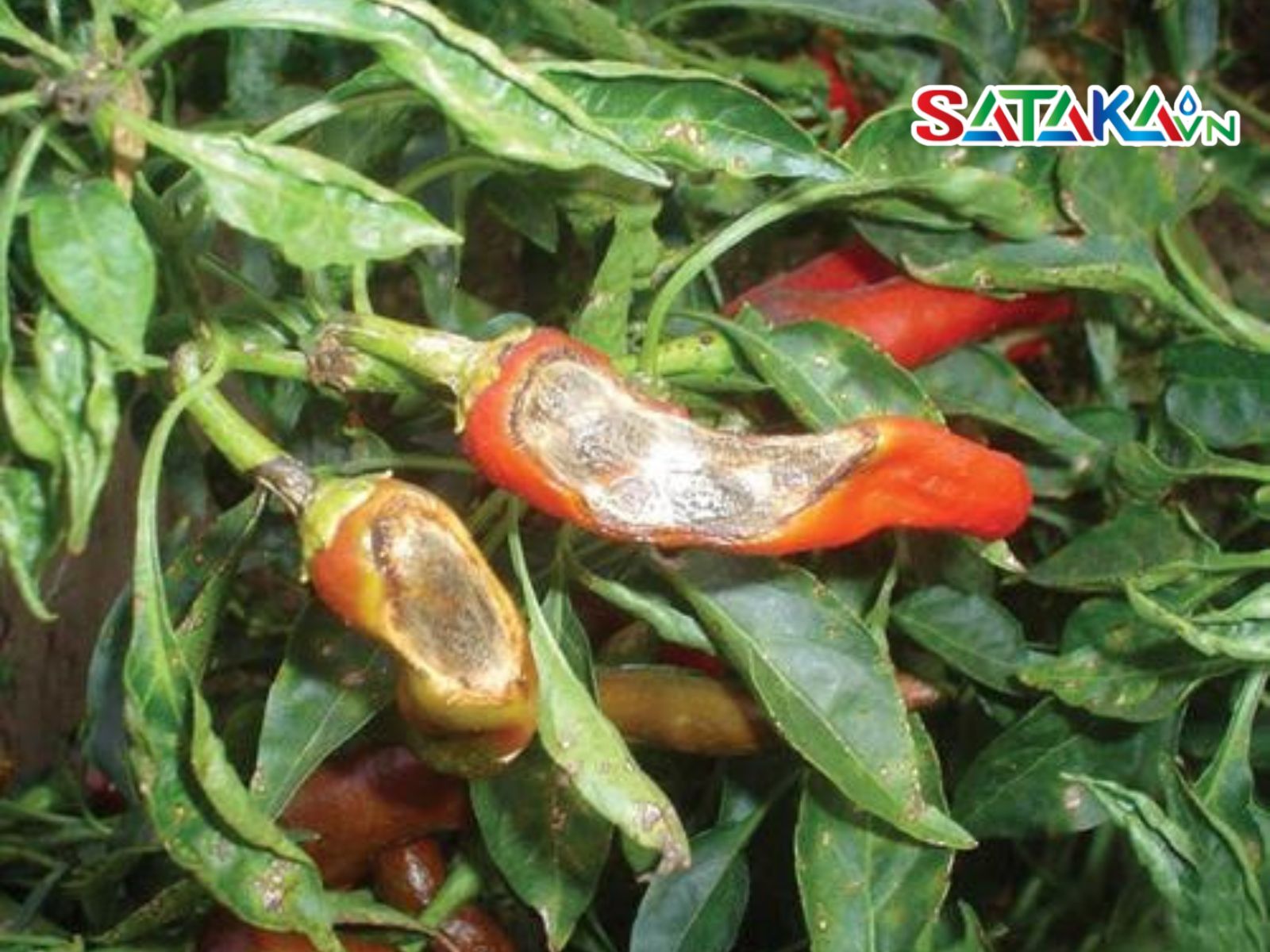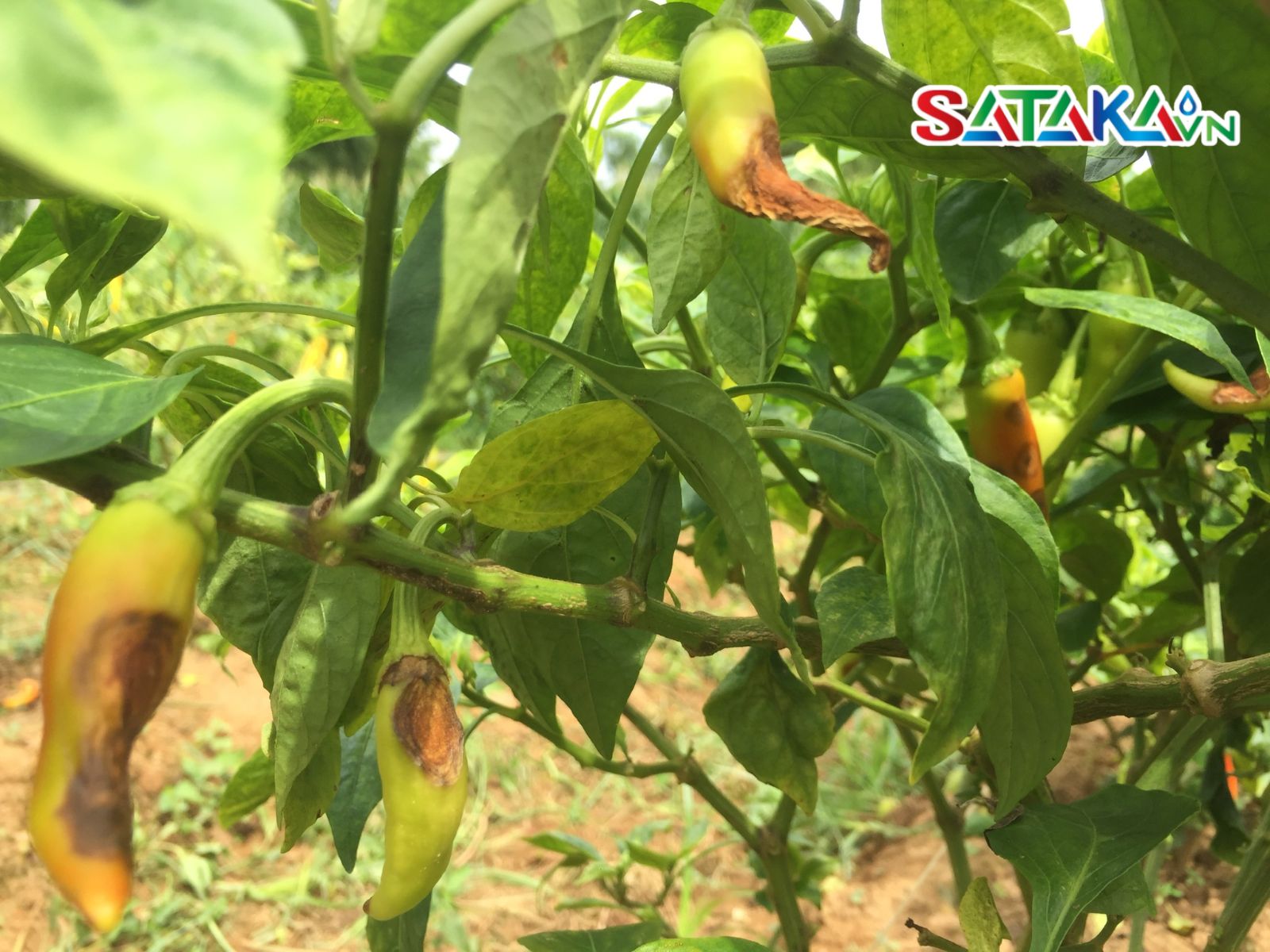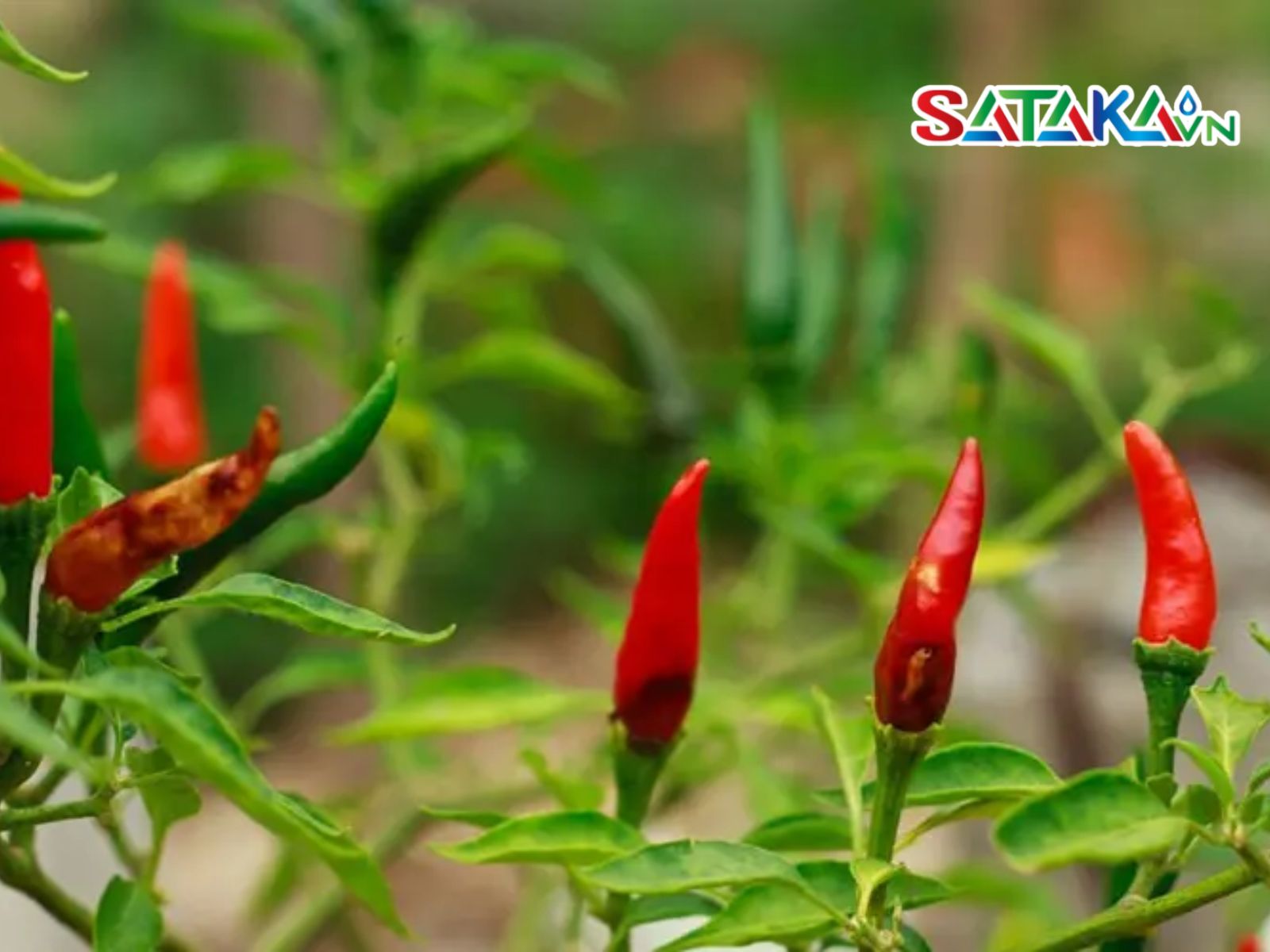Pepper anthracnose is a common disease that causes severe damage to chili plants. Learn about its causes, symptoms, and effective, easy-to-apply prevention and control methods for farmers.
Timely identification and treatment of plant diseases are crucial factors in helping farmers improve agricultural productivity and product quality. Among the common diseases that severely affect chili plants is pepper anthracnose. At Sataka, we'd like to share with you, our valued farmers, information about pepper anthracnose – from its causes and manifestations to the most effective prevention and control measures.
1. Causes of Pepper Anthracnose Disease
Pepper anthracnose is caused by fungi of the Colletotrichum spp. genus, most commonly C. gloeosporioides. The fungus survives in seeds, plant debris, and soil for 1–2 years. When it encounters warm, humid conditions (28–30°C), especially during the rainy season, the fungal spores easily germinate and spread rapidly.
The fungus attacks fruits, leaves, stems, shoots, and flower clusters:
- Fruits: Small, sunken spots appear, which then expand, causing the fruit to rot, dry out, and drop.
- Leaves, Stems: Brown or purplish-red spots appear, the bark peels off, and shoots turn dark.
- Flower Clusters: Wither and turn black, reducing fruit set and quality.
Pepper anthracnose is a dangerous and easily spread disease that reduces yield and severely impacts growers' income.

Causes of Pepper Anthracnose Disease
2. Symptoms of Pepper Anthracnose
Pepper anthracnose can appear on all parts of the plant: leaves, stems, fruits, shoots, and flowers.
- Leaves: You'll see round or irregular brown spots, often along the leaf veins. These spots later spread, developing red borders and becoming deeply sunken.
- Stems and Leaf Stalks: Lesions are spindle-shaped, slightly sunken, with a distinctive black border and tiny black dots. The bark tends to peel off easily.
- Fruits: Initial lesions are slightly sunken and somewhat wet. They then spread into circular or oval shapes, 0.6–1.2 cm long. In severe cases, fruits rot, their skin dries to a grayish-yellow, and they drop easily.
- Shoots and Flowers: Shoots rot and turn black, while flowers wither and die. This leads to stunted plant growth, fewer fruits, smaller fruits, and poor quality.
Explore: Mango Anthracnose Disease: Causes, Symptoms, and Control Methods
3. Conditions for Disease Outbreak and Development
Pepper anthracnose originates from fungal spores that survive in seeds, diseased plant residues, soil, or on weeds and alternate hosts (like tomatoes, potatoes, etc.).
Spores spread through rainwater, wind, insects, and even farming tools. The disease develops strongly when:
- The weather is warm and humid, especially during the rainy season.
- Fields are low-lying with poor drainage, or if too much nitrogen fertilizer is applied, or if nutrient levels are imbalanced.
- Chili is grown continuously for many years, causing the disease to appear early, even on young fruits.
- Even in the dry season, if humidity is high due to fog or excessive watering, pepper anthracnose can still cause severe damage.

Conditions for Disease Outbreak and Development
4. Prevention and Control Measures for Pepper Anthracnose
To effectively control pepper anthracnose, farmers should implement integrated prevention measures right from the start of the crop season, especially during the rainy season – when the fungal disease develops most vigorously.
4.1. Cultural Practices
- Choose good varieties, disease-free seeds, prioritize using chili varieties with disease resistance, and avoid taking seeds from fields that have previously suffered from pepper anthracnose. Seeds should be treated with hot water at 52°C for 2 hours or with a specialized fungicide.
- Thorough soil preparation, high raised beds, good drainage The fungus causing pepper anthracnose thrives in humid conditions. Farmers need to create high raised beds to ensure quick drainage, especially during the rainy season.
- Regular field sanitation After harvest, completely destroy all diseased plant residues to prevent the fungus from surviving into the next season. Clear away weeds to eliminate potential hiding places for the fungus.
- Rational fertilization Avoid applying excessive nitrogen (N) fertilizer, as dense, green foliage can easily create a humid environment for fungal growth. Apply NPK fertilizer in a balanced manner, combined with well-rotted organic manure and Trichoderma preparations to enhance soil resistance.
- Sparse planting, crop rotation Do not plant chili too densely. If a field has been affected by the disease, practice crop rotation with paddy rice or other non-solanaceous crops for 2–3 years to break the disease cycle.

Prevention and Control Measures for Pepper Anthracnose
4.2. Chemical Measures
As soon as symptoms of pepper anthracnose are detected, cut off and destroy the affected parts, then spray with fungicides containing active ingredients such as:
- Metominostrobin, Azoxystrobin
- Chlorothalonil
- Propineb
- Metalaxyl-M + Mancozeb...
- Some effective products include: Ringo-L 20SC, Daconil 500SC, Ridomil Gold 68WG, Kanras 72WP, etc. (follow recommended dosages).
- Supplement foliar fertilizers to boost resistance Combine spraying Calcium, Silicon, Zinc, and Boron to help plants become sturdier and limit fungal penetration. Spray periodically every 5–7 days during the rainy season.
-
Notes when spraying pesticides:
- Avoid using stimulants or high-nitrogen fertilizers when the plants are diseased.
- Always add a spreading/sticking agent to prevent the pesticide from being washed away.
- After heavy rain, thoroughly rinse the plants with water, then spray preventive fungicides.
- If the disease is severe, spray 2–3 times with a 7–10 day interval, ensuring a safe pre-harvest interval (PHI).
Understanding and proactively preventing pepper anthracnose from the beginning of the crop season will help farmers minimize risks and protect their chili gardens throughout the growing season. Although it is a common and troublesome disease, by correctly combining cultural practices and chemical measures, farmers can completely control the spread of pepper anthracnose. We hope these insights from Sataka will help farmers confidently care for healthy, high-yielding chili gardens.
SATAKA VIETNAM JOINT STOCK COMPANY
Address: No. 246 Nguyen Kim Cuong, Tan Thanh Dong Commune, Cu Chi District, Ho Chi Minh City
Hotline: 0856.555.585 or 0789.917.927
Website: https://sataka.com.vn/


